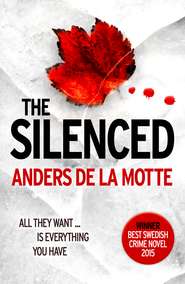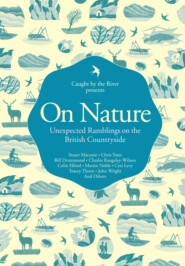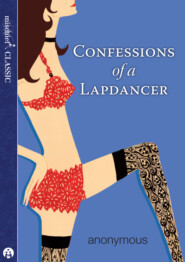По всем вопросам обращайтесь на: info@litportal.ru
(©) 2003-2025.
✖
We Are Not Such Things: A Murder in a South African Township and the Search for Truth and Reconciliation
Настройки чтения
Размер шрифта
Высота строк
Поля
Linda Biehl, front left, walks with Avile Peni, 3, the daughter of one of the four men convicted and imprisoned for her daughter Amy Biehl’s death on August 25, 1993.
The group arrived at the marble cross, the kids stopped playing, and everyone briefly grappled with what to do next. Somebody had placed upon the memorial a blown-up old photo of the late Peter Biehl, a smiling, white-haired man with the chunked-out build of a retired college football player, flanked by a young Easy flashing a peace sign and a young Ntobeko grinning broadly; it had been taken during their first meeting and was weighed down with a cracked brick, of the sort that had been used to bludgeon Amy. Amy’s old Cape Town university colleagues had offered to arrange a memorial day a while back but hadn’t done anything, so this whole makeshift show had been put together on the fly in the days since Linda had landed a week earlier.
“Who wants to give a speech?” Linda asked. A curly-haired former colleague of Amy’s stood up, said a few words about her departed friend, let out a sob, and threw herself into Linda’s arms. Linda patted her while maintaining a close-mouthed smile; the photographer snapped away. Some others filed before the small crowd and spoke about the loveliness of Amy, the strength of Linda, and the importance of grace and transformation. Nancy, holding her STOP THE SENCELESS VIOLENCE sign, took the stage for twenty minutes, during which her husband shot her a stream of “cut-it-short” glares, which she ignored.
“Amy was a beautiful soul!” Nancy said. She wore wire-rim glasses and long colorful earrings.
I stood away from the group and leaned against a white sedan. Mzi Noji, a middle-aged, unemployed ex-militant, ex-con, and army veteran, arrived on foot, wearing his green cap, embroidered with the phrase UNIVERSAL MESSAGE over a Rastafarian flag. Mzi was a lifelong social activist, raised during the height of the anti-apartheid struggle. Even today, when he claimed that he wanted to get on with his life, he continually found himself embroiled in protests, marches, negotiations, meetings, neighborhood committees, and organizations.
I’d met Mzi by chance a year earlier, and he had become an unexpected kindred spirit, as well as my guide, my translator, my friend. He accompanied me on my expeditions and investigations into the Amy Biehl story, often driving my car and dredging up forgotten people from within the depths of the townships. Mzi was also to be my key to unraveling the truth, or as much truth as possible, of what really happened on that fateful day twenty years before.
Until I met Mzi at a burger shop downtown, I had been tracking the same story that every journalist before me had written, except that my aim had been to tell for the first time the full tale as it stretched over two decades. But Mzi informed me that he believed that this long-accepted story of the circumstances of Amy’s death was not exactly accurate. His revelation had led me, in a series of nearly unbelievable coincidences, to a meeting I had had the day before. After months of frenzied searching, I had finally found an old and ruined man who had also been in Gugulethu on August 25, 1993, though few remembered him. Nobody had ever told his account of that day, nor made the chilling links between what had happened to him and what had happened to Amy Biehl five hours later and a quarter mile away. The old man knew something about brutal mobs and racial violence, and he was the final piece in the jigsaw I had been painstakingly piecing together for two years.
Mzi sidled up next to me, his cap pulled low over his deep-set eyes. He was tall and strong, with a little paunch he was self-conscious about, so he was always abstaining from chocolate milkshakes even though he loved them. We each crossed our arms on the roof of the sedan and rested our chins on our forearms. By then, Easy had reappeared and parked the van to the side of the memorial, and was hiding behind us, hoping he would not be called on to talk. He was mumbling: Man, he hoped Makhulu did not make him stand up before the group.
“Amy was an accidental hero,” Nancy said.
Mzi’s hands were shaking. He looked down at them, and so did I.
“Her death was a Shakespearean tragedy!” Nancy said.
The old lady and the girl had hit up everyone, I noticed. Every lapel boasted a beaded pin and a cutout heart.
“Linda is strong, charismatic, beautiful,” Nancy said.
I looked around. I felt a surge of fury, inexplicable in its intensity. I moved closer to Mzi. In a few days, his great-aunt’s house would burn down, with his great-aunt inside. Just like his own mother’s house back in the old days of politics and firestorms, when the ANC kids in the neighborhood shot it full of lead and set it alight with petrol bombs. Now there was no liberation movement to blame, no just cause or grand scheme, no enemies intent on your demise. Just faulty wiring and cheap petroleum heaters. Mzi was listening intently to Nancy, his face set in that practiced flat expression of his, composed specifically to shroud the fact that he was almost always overwhelmed by various emotions.
Nancy praised Easy and Ntobeko. This was a story of “gentle forgiveness,” she said. “Of lived apology!”
When she finished her speech, the crowd applauded.
Linda stood before her guests. She looked for Easy and Ntobeko. Ntobeko was long gone, so she called for Easy. A sharp intake of breath, back straightened, and then he emerged from behind us and went to her. Easy hooked his arm in Linda’s and stood with her as a local reporter scribbled, a pair of student videographers filmed, the hometown newspaper photographer snapped away. Linda began to say her part. Easy and I looked at each other for the briefest of moments, eye-to-eye above the small crowd, and then he turned back to smile for the cameras.
2. (#ulink_ff2d41fa-bcb4-5a5b-b2ff-a8cda40772b4)
They tell me: eat and drink. Be glad to be among the haves!
But how can I eat and drink
When I take what I eat from the starving
And those who thirst do not have my glass of water?
And yet I eat and drink.
—BERTOLT BRECHT, “To Those Who Follow in Our Wake”
When I went to live in South Africa in November 2011, I didn’t know what to expect, and I didn’t reflect on it. My husband, Sam, then my fiancé, wanted to return on sabbatical to the country he had left at age eighteen, so I followed. Career-wise, I was untethered. Years earlier, I had published a light travel memoir to nobody’s notice, and since then I had no real writing prospects as far as I could tell. Every single article I pitched to magazines was rejected. I kept submitting short stories set in Montana to literary journal contests, in the hopes of winning $500, but I only came in as runner-up twice, so I actually lost money, since it usually cost $20 to enter. To make ends meet, I had taken to editing a celebrity doctor’s website, despite having no medical knowledge. If Sam wanted to move across the world, I had no argument against it.
Soon after Sam took off to find us a place in Cape Town, I sold the old SUV I’d had for years, moved my boxes to a storage locker in New Jersey, packed an oversized duffel bag full of clothes, forced my flailing dog into a travel-safe crate at the JFK cargo terminal, and hurtled fourteen hours across the ocean to Johannesburg. Sam met me at Arrivals. We planned to drive the nine hundred miles to Cape Town rather than put the dog on another connecting flight, so we rented a car and cut through the Karoo desert.
Karoo, which means “land of thirst” in the indigenous Khoikhoi language, is a vast, bleak scrubland that stretches through the country, searingly hot in the afternoon and cold as steel at night. Sheep roam across its inhospitable terrain, dotted with rugged little shepherds’ dwellings where young boys with hard feet spend months alone. I sat in the passenger seat and gazed out the window at the monotonous landscape. It looked like a place picked over, as if anything of value, anything lush or desirable or even a little bit sweet or pretty, had been collected by a determined band of looters sweeping across the plain, leaving behind only dry bush and dust. The N1 highway slices through that rugged expanse, wide and smooth and lonely.
Only a few hours from Johannesburg, we came upon a gruesome car accident. The remains of a car sat diagonally across two lanes, its mangled hood smashed into its windshield, its roof sliced clean off. The pavement was strewn with glass, sparkling like crystals in the high spring sun, and a couple of truckers had pulled to the side to call for help and to snap cellphone photos. Some merciful soul had rolled a heavy woolen blanket across the top of the car to try to conceal three bodies sitting upright.
The image lingers bright and precise in my mind: two men flank a woman in the back of the ruined car, which was slammed—by what? a tractor trailer?—with such force that the passengers must have died on impact but were not ejected from their seats, perhaps because they were packed so tight in there. All three are slender with dark brown skin, and young, judging by their builds. The woman wears a pink T-shirt. Her hair is jet black and plaited into stiff shoulder-length braids that stick out in all different directions—like Pippi Longstocking, I remember thinking.
From then on, we drove slowly and anxiously to the guesthouse where we planned to stay the night. It was situated in the stark Northern Cape desert town of Colesburg, the halfway point between Johannesburg and Cape Town, where it seemed every other home offered a bed for weary travelers. The owner, an elderly man of British ancestry, led us to our room, a white square filled with pink floral pillows, a pink comforter marred by a tiny blood spot, and a knitted woolen throw so rough that the dog used it to scratch her back. The decoration was minimal: a single straw hat, pinned with a fake rose, nailed to the wall.
That night, we drove through the town, which gave the impression of overwhelming flatness—flat roads, flat land, flat houses—and ate tasteless, mushy vegetables at a pub patronized only by white people. After, we stopped for snacks at a local twenty-four-hour shop. As I stood in line to pay for chips and a drink, a tired-looking light-brown-skinned woman at the register spoke to me in a heavy Germanic-sounding language I couldn’t understand. She was, Sam explained, a colored woman, a term that sounds offensively retrograde to Americans but is in fact the designation for the population of mixed-race South Africans. The language she had directed at me was Afrikaans, a derivation of Old Dutch spoken mainly by South Africa’s colored people and white Afrikaners, the descendants of early European settlers.
The next day, as we were leaving, we chatted with our host, a former school principal who said he had taken a buyout package for state employees when the black majority came to power in 1994. He had retired early to run this unique interpretation of an inn.
“So, what’s the population of Colesburg?” Sam asked.
“Two thousand whites, five thousand coloreds, and fifteen thousand blacks,” the man answered. That was how he automatically understood his hometown—as a collection of people broken into racial categories. We herded the dog into the car and headed toward our final destination: Cape Town.
The Western Cape contains the southernmost tip of the African continent. European explorers and kings and queens had long agreed that if they could only round the Cape, they would be able to sail northeast to India and open a sea route to Asia, with its silks and spices and gemstones and teas. Such a route would prove lucrative to European powers, which had so far only managed to arrange an arduous and dangerous trade trek through the Middle East, which was teeming with bandits and costly middlemen. The only problem, as the Europeans saw it, was the Cape’s habit of swallowing ships.
On February 3, 1488, the square-jawed Portuguese voyager Bartolomeu Dias and his crew anchored near a freshwater spring in a fishing village known today as Mossel Bay. Dias had departed Lisbon seven months earlier in an attempt to chart a new southern route to Asia, and he and his haggard crew had just survived a harrowing storm. Above, watching from a bluff, stood a group of Khoikhoi tribesmen, indigenous cattle farmers with yellow-brown skin, standing around five feet tall.
The Khoikhoi, grazing their animals by the sea on that day in the fifteenth century, watched as a vessel full of ashen humans docked in their watering hole and started taking water. The Khoikhoi were not a particularly warmongering group, but, angry and frightened, they pelted the explorers with rocks. The whites responded with gunshots, killing a Khoikhoi before sailing away.
Though Dias wished to continue charting the eastbound journey, his bedraggled crew threatened mutiny, and so the ship stopped at what is now known as Bushman’s River, where Dias planted a Portuguese flag and then turned homeward. One cold comfort for Dias was that he had at least laid eyes on the meridional tip of Africa, a rocky point of land where waves crashed relentlessly against the shore and heavy winds blew through tough grasses and low, hardy scrubs. The balmy currents of the Indian Ocean here meet the arctic currents of the Atlantic. From a height, one can see the two bodies of water tangle together in a shaky line of wild white foam that stretches past the horizon.
These waters had pushed Dias blindly out to sea, and Dias, returning home after seventeen months with his men, named the area Cabo das Tormentas, or Cape of Storms. King John II of Portugal, who saw the Cape as a stop on the profitable opening to the East, rebranded it Cabo da Boa Esperança, or Cape of Good Hope. But Dias had been prescient: twelve years later, on another journey, he and his crew were swallowed whole by the Cabo das Tormentas, their sunken ship never found.
Dias’s bearded compatriot Vasco da Gama was more successful. In 1497, he was the first to navigate an all-water eastern passage. Da Gama rode the winds down the African coast, then arced into the Atlantic and swept back toward land, docking for supplies and water in an inlet on the Western Cape today known as St. Helena Bay. There, the threatened Khoikhoi again attacked, spearing da Gama in the thigh. Undeterred, da Gama and his crew continued down the coast and rounded its tip. Again, they came upon a tribe of Khoikhoi, but this time they enjoyed better relations, offering gifts. Da Gama even danced with some locals.
The good vibes were short lived. As was the Portuguese habit, da Gama took water supplies without asking the chief for permission. The Khoikhoi, aghast at da Gama’s slight, readied themselves to attack, and da Gama quickly sailed off to the western coast of India, which he would reach in 1498 with the help of an Arab navigator he picked up in East Africa. In 1510, the Khoikhoi slaughtered sixty-five Europeans, including a Portuguese viceroy heading home after his term in the East—a massacre that resulted in a century during which ships gave the Cape a wide berth.
This was the inauspicious beginning of the relationship between blacks and whites in South Africa, a relationship that began with whites taking natural resources that both groups assumed were rightfully theirs. In a foretelling of events to be replayed in centuries to come, the blacks threw stones, and the whites responded with bullets.
A year before landing in Cape Town, I’d been to South Africa on holiday. Those days in the Karoo had offered me a hint that living in the country would be nothing like that three-week vacation, when we took a safari just outside of Kruger Park and saw a pride of lions, dozens of elephants, the far-off silhouette of a leopard, and a pack of endangered spotted African wild dogs chilling out in the bush, licking their balls and nuzzling each other like regular pets, except that they could run at forty miles an hour to gut and devour a gazelle. In Cape Town, we lay about on palm-tree-lined beaches, which were too sunny for my New England tastes. The white people on the beaches—and there were mostly white people on the wealthy stretch of beachside suburbs known as the Atlantic Seaboard—looked like descendants of Russian oligarchs, Baywatch actors, and/or the cast of your average reality television program: lots of enhanced breasts and chiseled six-packs, displayed with unabashed vanity.
But when I settled in Cape Town for two years, I found the city disconcerting. I landed in a white enclave by the seaside, where my husband’s Jewish family and their insular, tight-knit community lived in the houses typical of well-off South Africans: pale-colored cement rectangles surrounded by high walls lined with barbed coils, electric shock wire, or shards of broken glass.
The white Capetonians I met at first had been raised in a country steeped in racist policy and educated according to a racist curriculum. History books reinvented colonial commandos who slaughtered indigenous people as heroes. During apartheid most whites had never seen the living conditions of blacks. Opposition groups were banned, their leaders in exile or prison. The media was heavily censored. In 1977, for example, 1,246 publications, 41 periodicals, and 41 films were banned in South Africa—most of them putting forth an anti-apartheid view. The government also controlled TV, radio, and, to some extent, newspapers. After apartheid, most whites still turned away from the reality of daily life for their black compatriots, never visiting townships, denying or justifying the continued inequities between the races. Therefore, most white South Africans of a certain age, and accordingly their children, had become—through grand design, through osmosis, and through their own choice to accept the status quo—entrenched in racism.
A friend of mine once suggested that an anthropologist would do well to study the ways of the white tribes of South Africa. The white Capetonians I met liked working out, getting their hair done, shopping, displaying large diamonds, driving flashy cars, eating sushi, and cooing at their dogs, both pedigreed and rescued. They referred to things that tickled their fancies as “stunning,” “spectacular,” “unreal,” and “out of this world.” They dished local gossip and talked about money and business. They discussed families who had been lucky enough to emigrate to the major white South African resettlement destinations: the States, the U.K., Israel, Australia, Canada. No matter how many assets a person possessed in South Africa, he was guaranteed to moan about the country going to pot, and how a trailer in Sydney was better than a mansion in the most beautiful city of the most advanced country on this doomed continent.
They peppered mundane conversation topics with casual mentions of the black majority, most of whom they feared and few of whom they knew on a personal level. South Africa has no ingrained culture of “political correctness,” and so, on the subject of race, many people are generally far more forthright, nonchalant, and openly offensive than Americans. The white South Africans I met casually attributed to black people a number of negative characteristics: laziness, dishonesty, savagery, stupidity, ungratefulness, ugliness. They were puzzled by my sputtering protests, and regarded me as a naive foreigner (which I was, but for other reasons). They blamed all the problems in modern-day South Africa not on an intricate and complex set of political and socioeconomic issues running back centuries, but rather on the intrinsically hideous qualities of blacks. If the country was going to pot, this was because black people were fundamentally incapable of leadership. Presenting them with an endless list of horrible white leaders throughout history did nothing to change their minds.
“Blacks are lazy, and you’d know that if you worked at a corporate. I’m not being racist, I’m just stating the facts.”
“Sponsor a black child to go to school? Oh, right, because they end up being such model citizens.”
“I sure as hell am racist. The difference for you liberal Americans is your population is fifteen percent of them, but ours is nearly ninety percent.”











